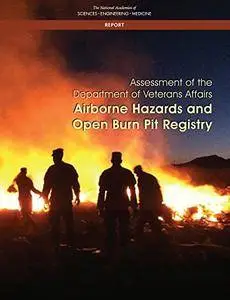Assessment of the Department of Veterans Affairs Airborne Hazards and Open Burn Pit Registry
by Engineering, and Medicine National Academies of Sciences, Health and Medicine Division, Board on Population Health and Public Health Practice, Board on the Health of Select Populations, Committee on the Assessment of the Department of Veterans Affairs Airborne Hazards and Open Burn Pit Registry
English | Apr. 25, 2017 | ASIN: B07253RQ7C | 253 Pages | PDF | 3 MB
by Engineering, and Medicine National Academies of Sciences, Health and Medicine Division, Board on Population Health and Public Health Practice, Board on the Health of Select Populations, Committee on the Assessment of the Department of Veterans Affairs Airborne Hazards and Open Burn Pit Registry
English | Apr. 25, 2017 | ASIN: B07253RQ7C | 253 Pages | PDF | 3 MB
Military operations produce a great deal of trash in an environment where standard waste management practices may be subordinated to more pressing concerns. As a result, ground forces have long relied on incineration in open-air pits as a means of getting rid of refuse. Concerns over possible adverse effects of exposure to smoke from trash burning in the theater were first expressed in the wake of the 1990–1991 Gulf War and stimulated a series of studies that indicated that exposures to smoke from oil-well fires and from other combustion sources, including waste burning, were stressors for troops. In January 2013, Congress directed the Department of Veterans Affairs (VA) to establish and maintain a registry for service members who may have been exposed to toxic airborne chemicals and fumes generated by open burn pits.
Assessment of the Department of Veterans Affairs Airborne Hazards and Open Burn Pit Registry analyzes the initial months of data collected by the registry and offers recommendations on ways to improve the instrument and best use the information it collects. This report assesses the effectiveness of the VA’s information gathering efforts and provides recommendations for addressing the future medical needs of the affected groups, and provides recommendations on collecting, maintaining, and monitoring information collected by the VA’s Airborne Hazards and Open Burn Pit Registry.



